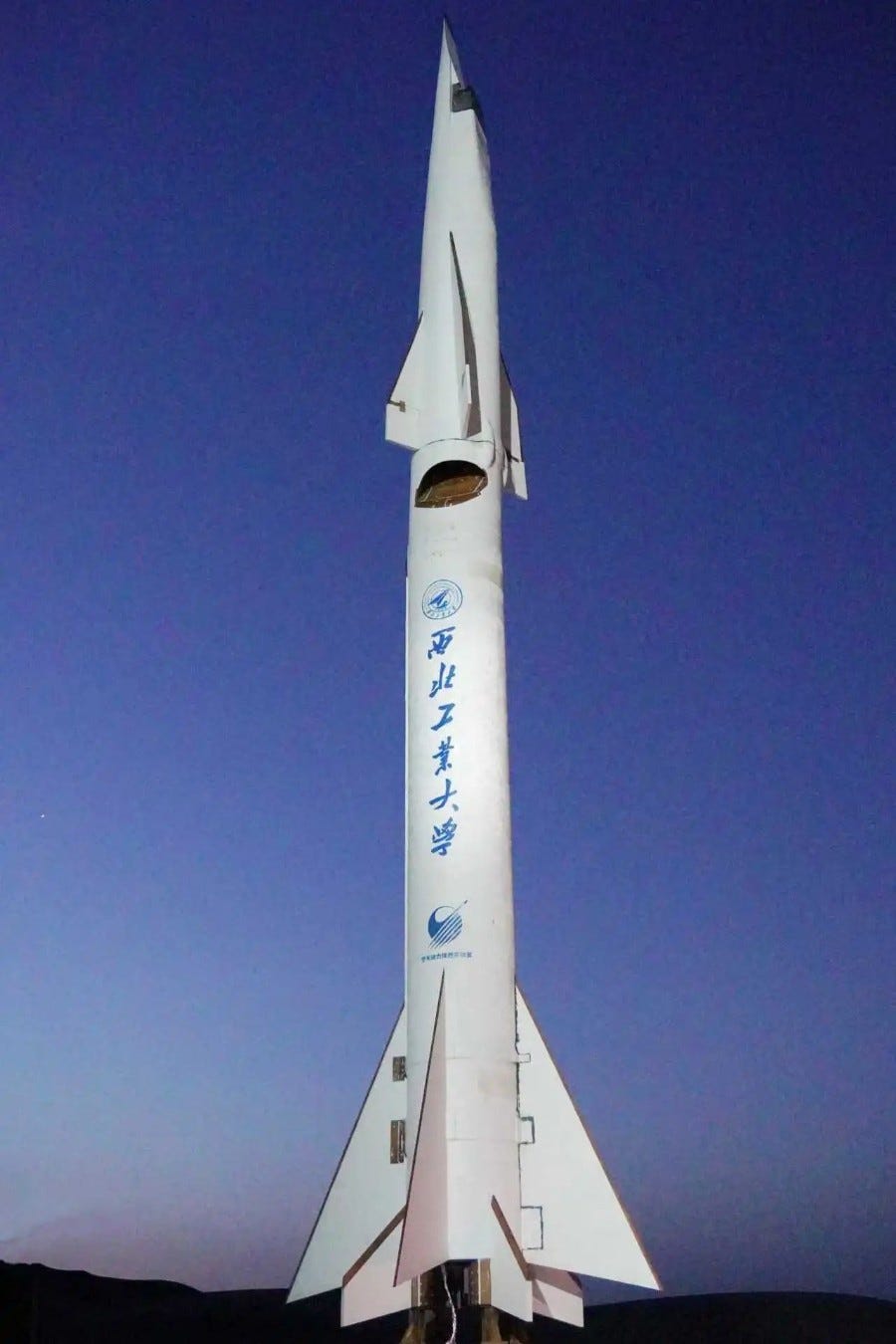Feitian-2 Soars in New Hypersonic Technology Test
Northwestern Polytechnical University team demonstrates autonomous hypersonic flight.
A team from Northwestern Polytechnical University’s (西北工业大学) School of Aeronautics and Astronautics has once again made headlines with a successful flight test of a suborbital hypersonic rocket on June 23rd, from a desert region in Northwestern China.
The rocket tested, called Feitian-2 (飞天二号), is said to be the first hypersonic vehicle in the world to utilize a rocket-based combined cycle engine burning kerosene and hydrogen peroxide through a variable geometry air intake with a variable thrust profile, as well as boasting autonomous flight. Through the test flight, important data on the engine and systems were obtained, however a flight speed was not disclosed.
Guancha (观察者网) reports that June 23rd’s test was built upon experiences and data obtained during the July 2022 flight of Feitian-1 (飞天一号), also built by Northwestern Polytechnical University, which surpassed Mach 5. That test verified the successful multi-modal operation of a kerosene-fueled rocket-ramjet combined cycle engine, demonstrating smooth transitions between rocket-to-subsonic combustion, subsonic ramjet, supersonic scramjet, and rocket-to-supersonic combustion modes in a single flight.
WeChat blog Sousou Garden (嗖嗖小花园) published an extensive piece regarding the test. The piece proposes that the choice of storable kerosene and hydrogen peroxide propellants over higher-performance but complex alternatives like liquid oxygen and hydrogen shows a ‘practical over perfect’ philosophy aimed at rapid deployment.
Alongside this, the piece argues that the tests’ technology breakthroughs could be potentially revolutionary for the economics of space access, by utilizing atmospheric oxygen during initial flight phases rather than carrying heavy oxidizers. Analysis within the piece suggests that similar technologies could enable airline-like space operations with horizontal takeoffs and landings, rapid turnaround times, and frequent launches. As such, more ‘exotic’ two-stage-to-orbit launch systems, like aircraft-launched spaceplanes, may be pursued along with small single-stage-to-orbit vehicles.
Technical achievements demonstrated by Feitian-2 and the university's quick development suggests a shift, in which deployable, useful systems might be more valuable than performance records for hypersonic vehicle developments.
The U.S. is also developing hypersonic systems currently, with NASA's X-43 program achieving speeds up to Mach 9.68 using hydrogen-fueled scramjet engines, but operated as a pure scramjet demonstrator, the U.S. Air Force's X-51, possibly the most comparable to Feitian-2, used JP-7 kerosene fuel and achieved over 210 seconds of scramjet flight at Mach 5.1, and more recently DARPA's Hypersonic Air-breathing Weapon Concept has focused on boost-glide or pure scramjet technologies at speeds exceeding Mach 5.
The South China Morning Post has previously reported that Northwestern Polytechnical University was the target of U.S. hacking efforts under the National Security Agency’s Tailored Access Operations unit, along with being sanctioned around the time of Feitian-1.





